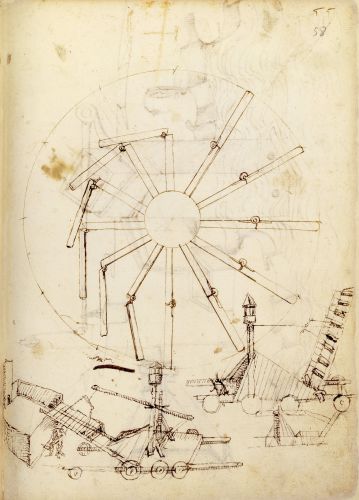Error
Perpetual wheel with articulated arms
The first illustration of this overbalanced wheel of Arab-Indian origin can be found in the 13th-century notebook of the architect Villard de Honnecourt. It was not found in other sources before Taccola’s drawing (shown here), dating to the first half of the 15th century. Its principle of operation is developed on the basis of the theory of the scale presented in the Problems of Mechanics attributed to Aristotle, then disseminated in the medieval statics of the de ponderibus tradition. The arms of the machine are divided into two sections, so that when one closes the system loses its balance. In this way a rotation is induced until a new condition of equilibrium is found. Seeing that the wheel is composed of six pairs of arms, the sequence of the conditions of non-equilibrium would have generated perpetual motion. This drawing, also reproduced in folio 71v of the anonymous MS. Add. 34113 now in the British Library, was drawn by the young Leonardo, who probably saw a copy in Florence in the 1470s and made a sketch in folio 1117rb of the Codex Atlanticus, which is one of his first references to perpetual motion.


